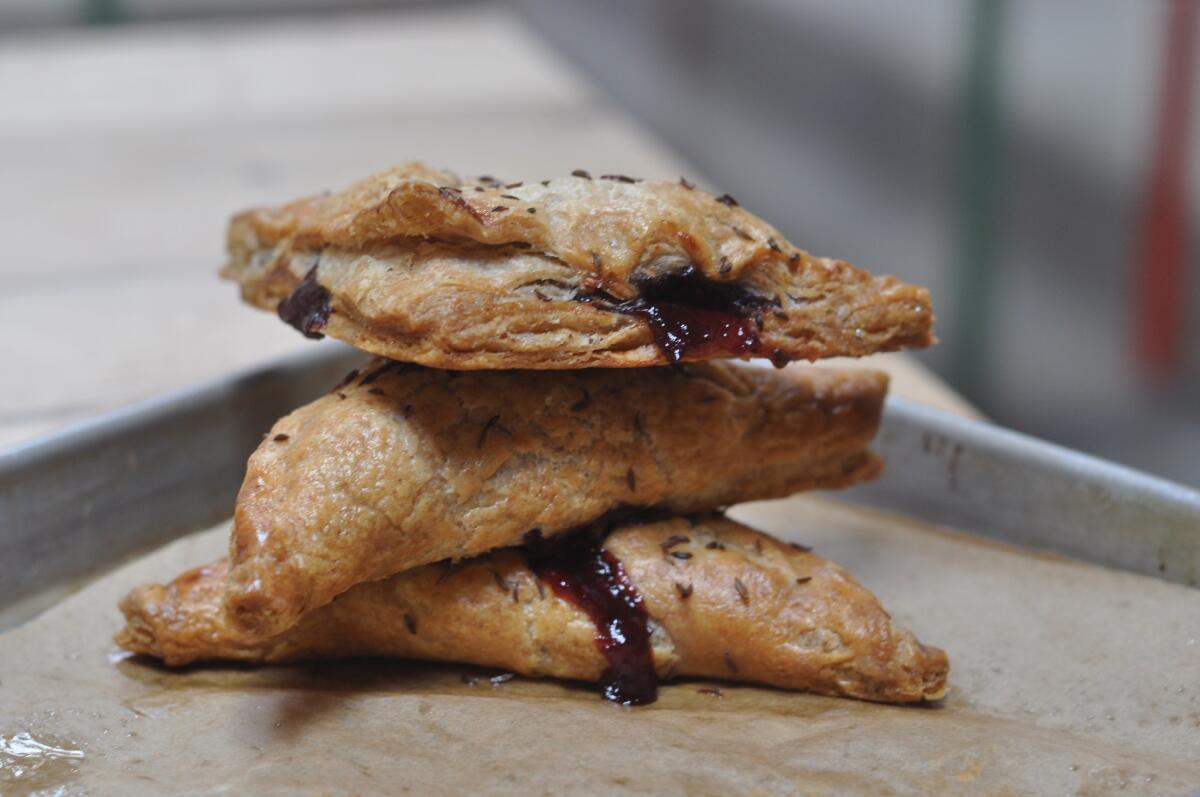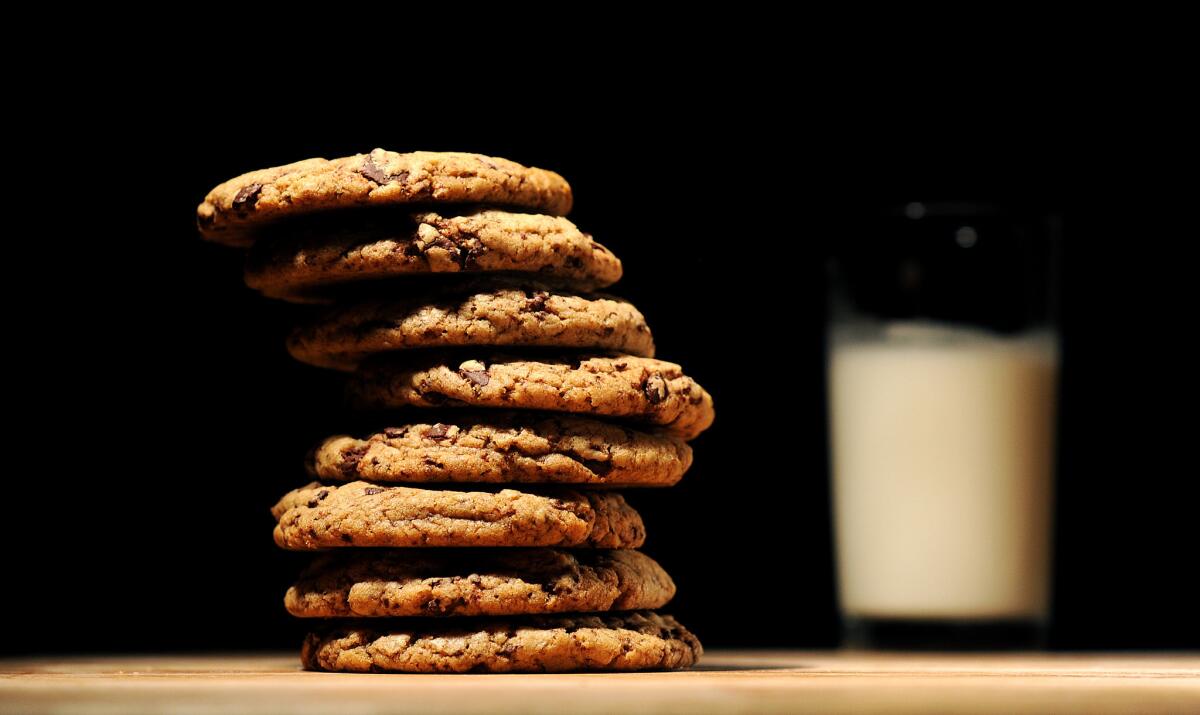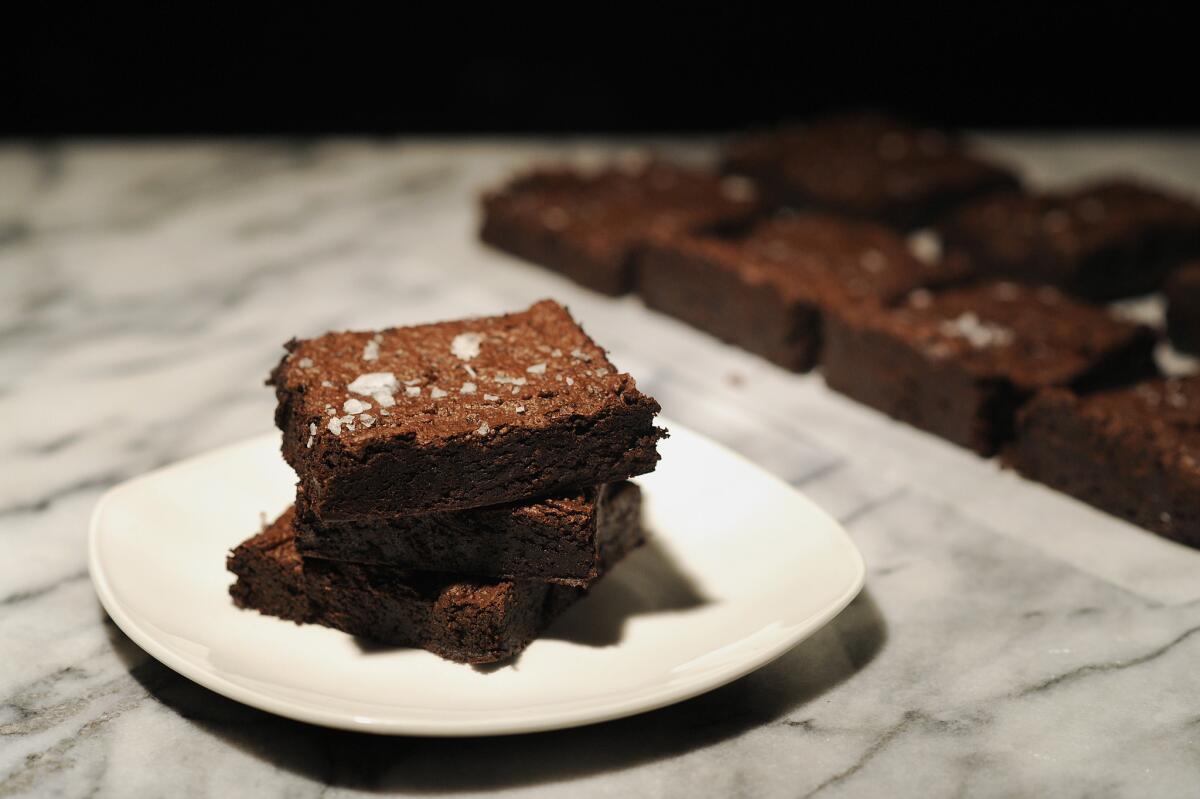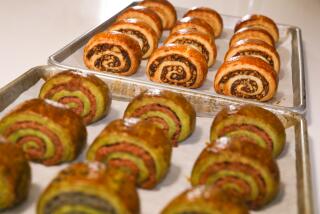Rye is finally having a moment. Taste why in these brownie, cookie and hand pie recipes.

- Share via
Think about rye and the things that probably come to mind are dense loaves of Old World bread, dark as earth and shot with caraway, maybe a nursery rhyme (blackbirds, pie) or more likely a tumbler of Prohibition-era whiskey. But these days if you’re a pastry chef, or like to bake like one, rye is exciting stuff — a heritage flour that’s finally getting its due.
Maybe this is because of our current fascination with Nordic cuisine, where rye has always played an important part. Or maybe it’s the whole grain movement, with bakers, millers and farmers bringing heirloom grains and flours to our attention. Either way, bakers are discovering the aromatic whole grain flour, and for a lot more than artisanal loaves. Malty, nutty, slightly milky in taste, rye has a complex flavor profile that can transform not only breads, but cookies, pastries, even brownies. And for those who are intimidated by bread-baking, and rye bread-baking in particular, using rye in other baked goods can be revelatory — as if cookies weren’t enough of a gateway drug already.
“Flour is a flavor component, not a dull white powder,” said Nan Kohler recently at her flour mill Grist & Toll in Pasadena, where she mills bags of Gazelle rye from Camas Country in Oregon on a massive Osttiroler stone mill from Austria. Freshly ground, the blue-gray grains are rich and fragrant, with a sweet, tangy flavor that pairs extremely well with a lot more than the traditional caraway seeds. Like what? Cherries and rhubarb, dairy and chocolate — lots of chocolate.

Recipe: Sycamore Kitchen’s chocolate chip rye cookies
“The flavor is subtle, a bit nutty, and definitely offers a complexity not achieved with all-purpose flour,” says Karen Hatfield, pastry chef and co-owner of Odys + Penelope and the Sycamore Kitchen in Hollywood. Hatfield, long one of the most celebrated pastry chefs in Los Angeles, makes her stellar chocolate pie with a rye crust, and uses rye flour in her chocolate chip cookies.
“It’s all about flavor,” says Stanley Ginsberg, a baker and author who loves rye so much that his next book, “The Rye Baker,” out from Norton in September, is focused solely on rye. “Most people may have been exposed to one or two or three rye breads, but the breadth and depth of the rye canon is incredible.
“Rye has lurked in the background for centuries,” says Ginsberg. “It’s fallen through the cracks, literally.”
Rye is a cereal grain that has been grown for millenniums, with archaeological evidence locating its origin near Mt. Ararat in Turkey, and cultivation spreading throughout the Near East and Europe. Because rye is far more durable than wheat and can withstand both cold climates and drought, it spread north, and became a staple in Northern European diets. But rye was often relegated to the margins of grain production, as wheat — milder in flavor, lighter in color — was given primacy in both Old and New World baking. For centuries, rye bread was considered peasant food. More recently, if you found rye flour at all, it was in so-called health food aisles or markets, near the granola and wheat germ.

Recipe: Rye chocolate brownies
Ginsberg says that the reason rye has lagged behind is that it’s intimidating, long considered a challenge to bakers because of its low gluten content, which can make it more difficult to work with and produce crumb that can be gummy. Rye is also high in amylase enzymes and pentosans, both of which contribute to that characteristic gummy quality. But if you experiment with using only percentages of rye in recipes — and use recipes from experienced bakers and pastry chefs — then rye can be surprisingly easy to use.
The trick to rye is to think about it less as a bag of flour than as a flavor component — and one could argue that all flour should really be considered that way, especially with the increasing availability of small batch flours. As Kohler points out, flour isn’t just anonymous white powder anymore. Whether it’s the nutty, earthy flours made from heirloom varieties of California wheat, or the bags of milky oat flour, fragrant and buttery corn flour, or dark and mineral buckwheat flour, flour can determine how a loaf of bread or a batch of cookies tastes. And if you think of how much flour goes into your baked goods, that’s a lot to ignore — or to use.
SIGN UP for the free In the Kitchen newsletter »
So pair rye with milder wheat flours that will accommodate and mitigate the idiosyncratic aspects of the rye. And then match the flavor of the rye with the other ingredients in your kitchen — the magnificent stone fruit now in season, such as cherries, apricots or peaches, plenty of cream and butter, and all that chocolate. Pastry chef Sarah Lange, who recently left Elysian to open a pop-up pastry shop at the upcoming Smorgasburg in downtown Los Angeles called Bearclaw Kitchen, uses rye in her cherry hand pies. Because although rye is still pretty spectacular in a loaf of bread, it makes for pretty great individual pastries too. And they’re a lot easier to fit in your pocket.
More to Read
Eat your way across L.A.
Get our weekly Tasting Notes newsletter for reviews, news and more.
You may occasionally receive promotional content from the Los Angeles Times.











